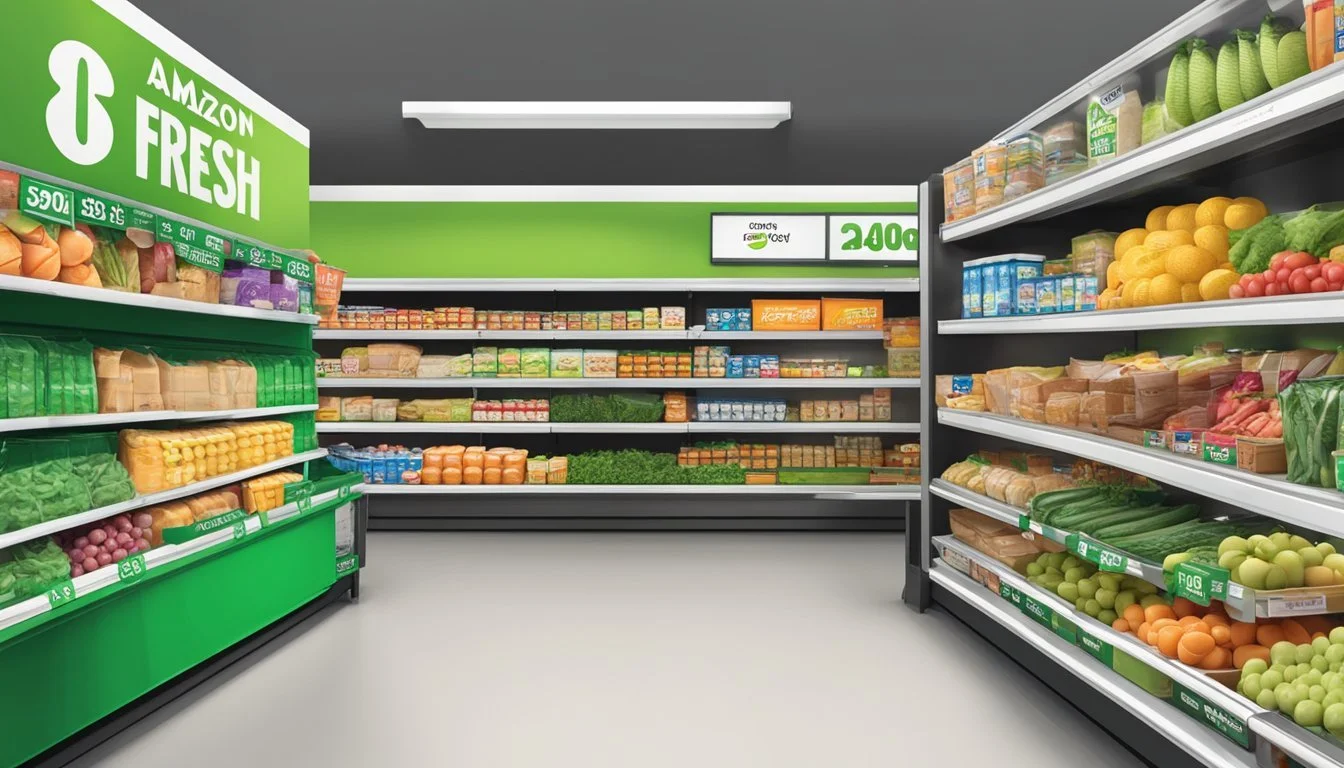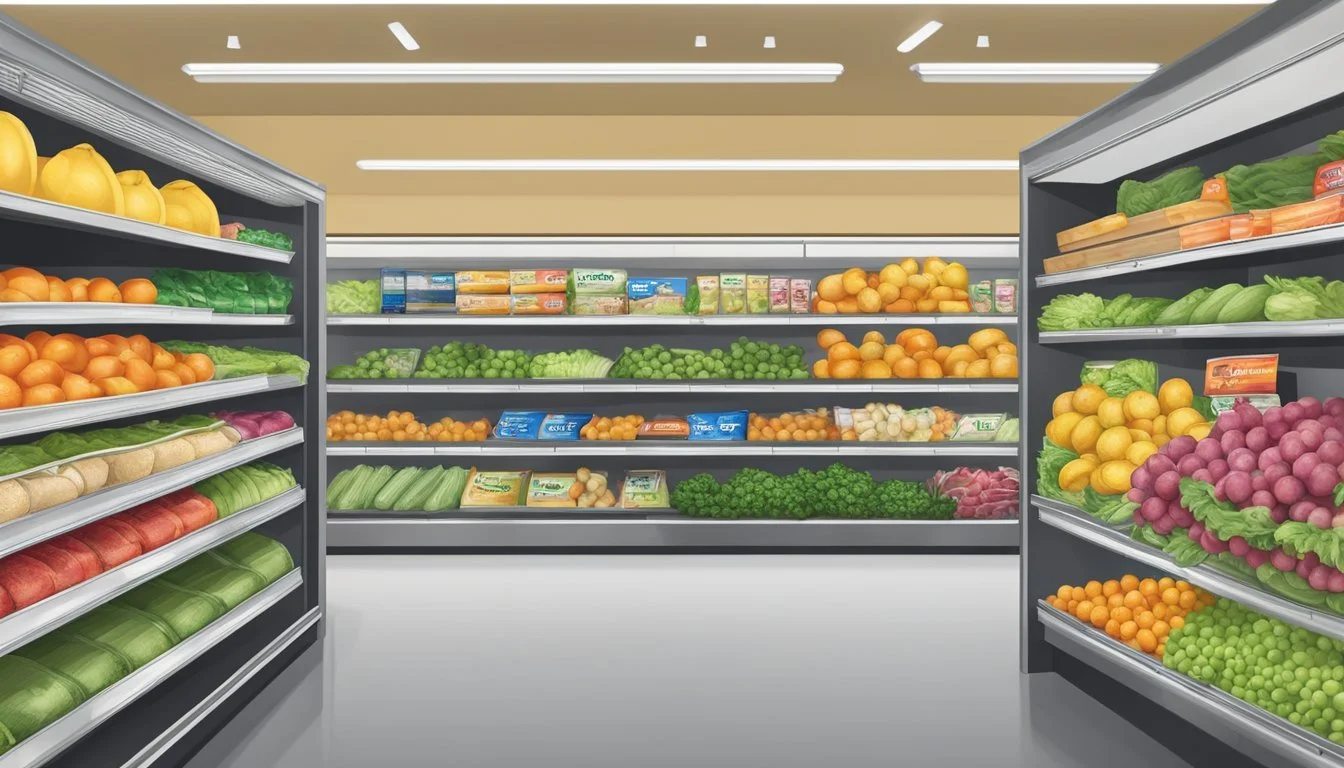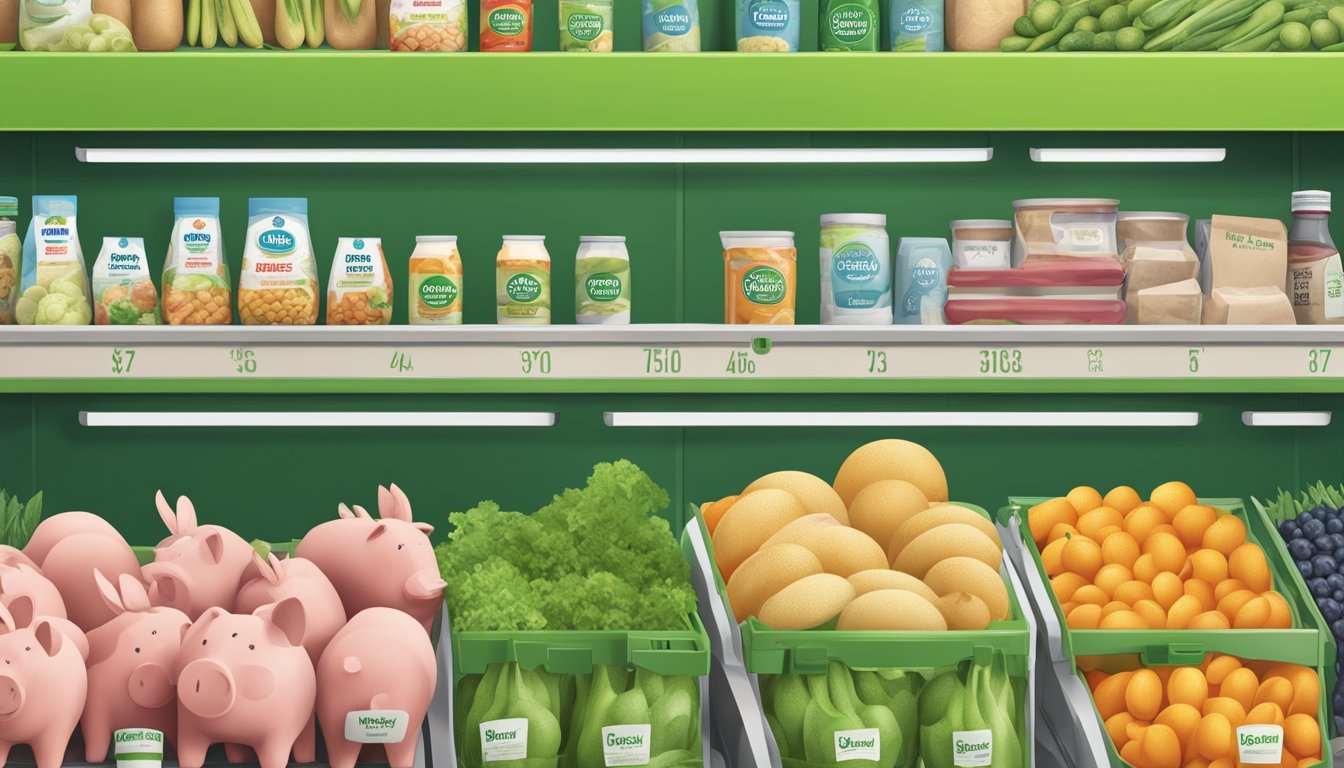Is Amazon Fresh Cheaper Than Piggly Wiggly?
A price comparison of online and traditional grocery shopping
Amazon Fresh and Piggly Wiggly represent two distinct approaches to grocery shopping. As consumers seek ways to stretch their budgets, comparing prices between these retailers has become increasingly important. While both stores offer a range of products, their pricing strategies and overall shopping experiences differ significantly.
Amazon Fresh generally offers lower prices on many items compared to traditional grocery stores, including Piggly Wiggly. This is particularly true for kitchen products, pantry staples, and household items. Amazon's vast distribution network and economies of scale allow them to maintain competitive pricing across various categories.
Piggly Wiggly, a regional chain with a long history, focuses on providing a local shopping experience. While it may not always match Amazon Fresh's prices across the board, Piggly Wiggly can offer better deals on specific items, especially in the fresh produce department. The choice between these two options often depends on individual shopping habits, location, and product preferences.
Overview of Grocery Shopping Options
Consumers today have a wide array of grocery shopping choices. Traditional brick-and-mortar stores like Kroger, Publix, and Safeway remain popular options for many shoppers.
Discount chains such as Aldi offer competitive pricing on a more limited selection of items. Warehouse clubs like Costco provide bulk purchasing options for those looking to stock up.
Specialty grocers like Whole Foods and Trader Joe's cater to health-conscious consumers and those seeking unique products. Regional chains such as H-E-B and Meijer have strong local followings in their respective markets.
Online grocery options have expanded rapidly in recent years. Amazon Fresh allows Prime members to order groceries for delivery or pickup. Walmart and other major chains now offer similar e-commerce services.
Piggly Wiggly, one of the first self-service grocery chains, continues to operate stores primarily in the southern United States. The company is known for its focus on local products and community involvement.
Pricing and selection vary widely between different grocery outlets. Factors like store location, product quality, and additional services influence overall costs for consumers. Delivery fees may apply for online orders from some retailers.
Understanding Amazon Fresh
Amazon Fresh is an online grocery delivery service that offers a wide selection of products with convenient ordering and delivery options. It integrates seamlessly with Amazon's broader ecosystem to provide a streamlined shopping experience for customers.
Service Model
Amazon Fresh operates as a grocery delivery and pickup service. Customers can order groceries and household items through the Amazon website or mobile app. The service offers same-day or next-day delivery options in many areas. For those who prefer to pick up their orders, some locations offer curbside pickup.
Amazon Fresh also has physical stores in select cities. These stores combine traditional grocery shopping with advanced technology, such as smart carts that automatically track purchases.
Prime Membership Benefits
Amazon Fresh is available exclusively to Amazon Prime members. Prime membership includes free delivery on Amazon Fresh orders over a certain threshold, typically $35-$50 depending on the location. Members can often choose from multiple delivery windows, including same-day or 1-hour delivery in some areas.
Prime members also gain access to exclusive deals and discounts on select Amazon Fresh products. These benefits enhance the value proposition for frequent shoppers.
Product Selection
Amazon Fresh offers a comprehensive range of grocery items. This includes fresh produce, meat, seafood, dairy, and bakery goods. The service also stocks pantry staples, frozen foods, and household essentials.
• Fresh fruits and vegetables • Meats and seafood • Dairy and eggs • Bakery items • Frozen foods • Canned goods • Snacks and beverages • Household items
The product selection aims to cover all typical grocery needs, allowing customers to complete their entire shopping list in one order.
Brand Offerings
Amazon Fresh carries a mix of well-known national brands and Amazon's own private label products. The service features Happy Belly and Fresh, Amazon's in-house grocery brands. These private label options often provide cost-effective alternatives to name-brand products.
National brands are well-represented across categories. This variety allows customers to choose their preferred brands or explore new options. Amazon Fresh also includes specialty and organic products to cater to diverse dietary preferences and requirements.
Convenience Factors
Amazon Fresh prioritizes convenience in several ways. The service integrates with existing Amazon accounts, streamlining the ordering process. Customers can easily reorder previous purchases or set up recurring deliveries for frequently bought items.
The Amazon Fresh app allows for on-the-go shopping and order tracking. Users can modify orders up until a cut-off time before delivery. The app also provides real-time updates on delivery status.
Flexible delivery options cater to various schedules. Same-day and 1-hour delivery services are available in many areas, offering quick solutions for last-minute needs. The ability to schedule deliveries in advance helps customers plan their grocery shopping around busy schedules.
Assessing Piggly Wiggly
Piggly Wiggly revolutionized grocery shopping with its innovative self-service model. The chain has a rich history and continues to offer competitive pricing and community-focused service.
Company History
Clarence Saunders founded Piggly Wiggly in 1916 in Memphis, Tennessee. The store introduced the novel concept of self-service shopping, allowing customers to select their own items from shelves. This innovation transformed the grocery industry.
Piggly Wiggly quickly expanded across the United States. Today, over 500 independently owned and operated stores exist in 17 states. The chain's longevity demonstrates its ability to adapt to changing market conditions while maintaining its core values.
Pricing Strategy
Piggly Wiggly employs a competitive pricing strategy to attract and retain customers. The chain often offers lower prices compared to some larger national retailers, particularly on fresh products.
Price-marked items, a practice Piggly Wiggly pioneered, ensure transparency for shoppers. This approach helps build trust and allows customers to budget effectively.
Weekly sales and promotions further enhance the store's value proposition. These deals typically focus on popular grocery items and seasonal products.
Store Brand Quality
Piggly Wiggly offers its own line of store brand products. These items provide customers with lower-priced alternatives to national brands without sacrificing quality.
The store brand covers a wide range of products, including:
Canned goods
Dairy products
Snacks
Household items
Piggly Wiggly's commitment to quality in its store brands helps maintain customer loyalty and provides a point of differentiation from competitors.
National Brands Selection
While Piggly Wiggly emphasizes its store brands, it also stocks a variety of national brands. This selection ensures customers have access to familiar products and can comparison shop.
The mix of national and store brands varies by location, reflecting local preferences. This flexibility allows individual stores to cater to their specific community's needs and tastes.
Piggly Wiggly stores typically carry popular national brands in categories such as:
Soft drinks
Cereals
Personal care items
Cleaning supplies
Customer Experience
Piggly Wiggly focuses on creating a positive shopping experience for its customers. The chain's smaller store format often results in a more personal, less overwhelming atmosphere compared to large supercenters.
Employees in uniform, another Piggly Wiggly innovation, help create a professional appearance and make staff easily identifiable for customer assistance.
Many Piggly Wiggly stores emphasize community engagement through:
Local product offerings
Sponsorship of community events
Personalized customer service
This localized approach fosters strong connections with shoppers and differentiates Piggly Wiggly from larger, more impersonal chains.
Cost Comparison
Amazon Fresh and Piggly Wiggly employ distinct pricing strategies that impact their overall affordability. These differences manifest in their pricing frameworks, discount offerings, and costs for key product categories like produce, meat, and dairy.
Pricing Frameworks
Amazon Fresh leverages its massive economies of scale to offer competitive everyday low prices. The company's vast distribution network and technological infrastructure allow it to minimize operational costs. In contrast, Piggly Wiggly, as a regional chain, may have higher overhead expenses that influence its pricing structure.
Amazon Fresh requires a Prime membership, which adds an annual cost but provides additional benefits. Piggly Wiggly does not have a membership fee, making its prices directly comparable without extra considerations.
Discounts and Deals
Both retailers offer various ways for customers to save money. Amazon Fresh frequently provides digital coupons and exclusive Prime member discounts. These deals are easily accessible through the Amazon app or website.
Piggly Wiggly typically offers weekly sales advertised in circulars. The store also accepts manufacturer coupons, which can lead to significant savings for savvy shoppers. Some Piggly Wiggly locations may have loyalty programs that provide additional discounts or rewards points.
Comparing Produce Prices
Produce prices can vary significantly between Amazon Fresh and Piggly Wiggly. Amazon Fresh often has competitive prices on popular fruits and vegetables due to its streamlined supply chain. The company's ability to source produce directly from farms can result in fresher items at lower costs.
Piggly Wiggly may have an advantage in offering locally sourced produce, which can be more affordable during peak seasons. The store's produce prices may fluctuate more based on local availability and seasonality.
Analyzing Meat and Dairy Costs
Meat and dairy products are staple categories where pricing can greatly impact overall grocery bills. Amazon Fresh tends to offer competitive prices on these items, especially for popular cuts of meat and common dairy products. The company's cold chain logistics allow it to maintain quality while keeping prices low.
Piggly Wiggly may have more variability in its meat and dairy pricing. Local sourcing and relationships with regional producers can sometimes result in better deals on certain items. However, the store's smaller scale may lead to higher prices on some national brand dairy products compared to Amazon Fresh.
Factors Affecting Grocery Costs
Multiple elements influence the pricing of groceries at different retailers. These factors can create significant variations in costs between stores like Amazon Fresh and Piggly Wiggly.
Brand Influence
Brand names play a crucial role in grocery pricing. National brands often command higher prices due to their reputation and marketing expenses. Store brand products, also known as private labels, typically offer lower prices.
Amazon Fresh and Piggly Wiggly both carry a mix of national and store brands. Amazon's private label products, like 365 by Whole Foods Market, compete with Piggly Wiggly's store brands.
The availability and pricing of these different brand tiers can impact overall grocery costs for consumers.
Store Location and Distribution
The physical location of stores affects pricing strategies. Urban areas with higher operating costs may see increased grocery prices compared to rural locations.
Amazon Fresh benefits from a vast distribution network, potentially reducing transportation costs. Piggly Wiggly stores are often located in smaller communities, which can influence their pricing structure.
Distribution efficiency and proximity to suppliers can lead to cost savings that may be passed on to customers.
Seasonality of Produce
Seasonal variations significantly impact produce prices. Fruits and vegetables in season are generally more abundant and cheaper.
Both Amazon Fresh and Piggly Wiggly adjust their pricing based on seasonal availability. Local sourcing practices can affect how these retailers manage seasonal price fluctuations.
Consumers may find better deals on certain items depending on the time of year and the store's ability to source seasonal produce efficiently.
Operational Efficiencies
Economies of scale play a crucial role in pricing strategies. Amazon's size and technological infrastructure allow for streamlined operations and potential cost savings.
Piggly Wiggly, as a smaller chain, may have different operational efficiencies. Their local focus could lead to reduced transportation costs for some products.
Inventory management systems, supply chain optimization, and labor costs all contribute to a store's ability to offer competitive prices. Amazon's use of automation and data analytics might provide advantages in managing operational costs.
Comparing Shopping Experiences
Amazon Fresh and Piggly Wiggly offer distinct grocery shopping experiences, with key differences in their online and in-store offerings, loyalty programs, checkout processes, and overall accessibility.
In-Store Versus Online
Amazon Fresh provides a primarily online shopping experience through its website and mobile app. Customers can browse a wide selection of items, add products to their virtual cart, and schedule delivery or pickup. The platform offers features like personalized recommendations and easy reordering of past purchases.
Piggly Wiggly, on the other hand, focuses on traditional in-store shopping. Customers can physically browse aisles, select items, and interact with store staff. Many Piggly Wiggly locations emphasize a local, community-oriented atmosphere.
Some Piggly Wiggly stores have begun offering online ordering and curbside pickup options, but these services are not as extensive as Amazon Fresh's digital platform.
Customer Loyalty Programs
Amazon Fresh integrates with Amazon Prime, offering additional benefits to Prime members. These perks may include:
Free delivery on orders over a certain amount
Exclusive discounts and deals
Early access to new products
Piggly Wiggly's loyalty programs vary by location, as many stores are independently owned and operated. Some stores offer:
Points-based systems for discounts
Digital coupons
Weekly specials for loyalty card holders
These programs aim to encourage repeat customers and provide value to regular shoppers.
Checkout Process
Amazon Fresh streamlines the checkout process through its digital platform. Key features include:
One-click ordering for frequent purchases
Saved payment methods
Automated delivery scheduling
Piggly Wiggly stores typically offer traditional checkout lanes with cashiers. Some locations have introduced self-checkout options to reduce wait times. The in-store experience allows for immediate possession of purchased items.
Both retailers accept various payment methods, including cash, credit cards, and mobile payment options.
Accessibility and Convenience
Amazon Fresh emphasizes convenience through its delivery service. Benefits include:
Scheduled deliveries to homes or offices
Pickup options at select locations
24/7 online shopping accessibility
Piggly Wiggly stores offer the advantage of immediate access to products. Store hours vary by location, but many are open daily. The chain's focus on smaller, community-based stores can provide:
Shorter travel distances for some shoppers
Familiarity with local preferences and products
Personal interactions with staff
Accessibility for those with limited mobility or transportation options differs between the two. Amazon Fresh's delivery service can be advantageous for homebound individuals, while Piggly Wiggly's physical stores may be more convenient for those who prefer or require in-person shopping.
Alternatives to Amazon Fresh and Piggly Wiggly
Several options exist for consumers seeking alternatives to Amazon Fresh and Piggly Wiggly. These range from national supermarket chains to regional grocers, discount retailers, and online grocery services.
Other National Supermarkets
Whole Foods Market offers a wide selection of organic and natural products. Known for its high-quality produce and specialty items, Whole Foods caters to health-conscious shoppers.
Trader Joe's provides unique, often private-label products at competitive prices. Their smaller store format and curated selection appeal to many customers.
Target has expanded its grocery offerings in recent years. Many locations now feature full supermarket sections, combining groceries with general merchandise.
Regional Grocery Stores
H-E-B is a popular chain in Texas and parts of Mexico. Known for its fresh produce, house brands, and community involvement, H-E-B has a loyal customer base.
WinCo Foods operates in the western United States. This employee-owned company is known for its low prices and bulk food sections.
Food Lion serves the mid-Atlantic and southeastern U.S. The chain focuses on convenience and affordability for everyday shoppers.
Discount Retailers
Walmart operates various store formats including Supercenters, Discount Stores, and Neighborhood Markets. These offer groceries at competitive prices.
Aldi provides a no-frills shopping experience with a focus on private-label products and low prices. The chain has been expanding rapidly across the U.S.
Dollar General has increased its grocery offerings, particularly in rural areas. While selection may be limited, prices are often very competitive.
Online Grocery Services
Instacart partners with local stores to offer same-day delivery in many areas. Users can shop from multiple retailers through a single platform.
Walmart+ provides unlimited free delivery from stores, along with other perks like fuel discounts.
Shipt, owned by Target, offers same-day delivery from various retailers including Target, CVS, and local grocery stores in many markets.
Conclusion
Amazon Fresh and Piggly Wiggly offer distinct grocery shopping experiences. Amazon Fresh leverages technology and convenience, with competitive pricing on many items. Its selection tends to be broad, catering to diverse customer needs.
Piggly Wiggly, a long-standing grocery chain, focuses on community connections and localized offerings. While its prices may vary by location, it often provides budget-friendly options, especially for fresh produce.
Both stores aim to be cost-effective, but their approaches differ. Amazon Fresh utilizes data-driven pricing strategies, while Piggly Wiggly relies on local market dynamics.
The "cheapest" option depends on individual shopping habits, location, and specific product needs. Amazon Fresh may offer lower prices on packaged goods and household items. Piggly Wiggly might have better deals on fresh, local produce.
Shoppers seeking the most budget-friendly grocery experience should compare prices on their commonly purchased items at both stores. Factors like convenience, product quality, and personal preferences also play crucial roles in determining the best value for each customer.







